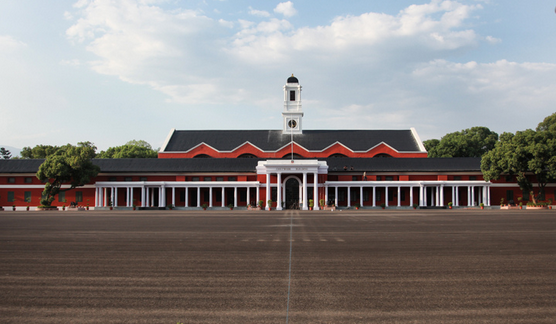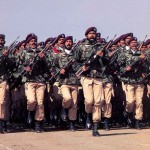India’s readiness needs along its western borders are largely operational in nature, while those along the northern borders and in the maritime space are more structural in scope.
The Context
Military readiness is perhaps one of the least studied and understood concepts in the field of strategic studies. In the absence of any significant literature or theoretical constructs, policymakers and practitioners tend to define or interpret readiness in several ways. This means readiness assessments could be either too narrow or too broad. A framework to assess military readiness levels against a well-defined criterion is therefore a critical policy imperative. A traditional view of readiness is to look at it as a subset of military capability. For instance, the United States Department of Defence (DoD) defines military capability as four distinct pillars: force structures, military modernisation, combat readiness and operational sustainability. Both readiness and sustainability together explain the ability of US armed forces to deliver combat potential in crises situations. In the Indian context, our national security concerns are somewhat different, it’s about securing our national interests in a difficult neighbourhood.
Policy Deficit
As a rising power in Asia, the future is bound to throw several unforeseen threats and challenges, beyond our routine territorial and sovereign concerns. Our key national security threats therefore must be stated with exactness, to seek precise responses from India’s armed forces. On its part, India’s armed forces are expected to be organised and trained to fight “anywhere, anytime and under any conditions”, including dealing with internal security threats. The question is how this optimism could be addressed. Scrutiny of India’s military preparedness is routinely undertaken by the Lok Sabha standing committee on defence, but its reports, despite the tremendous effort involved and sagacity of the members, lack precision. Annual reports issued by the ministry of defence (MoD) also present a generic picture and do not adequately explain India’s war-fighting potential. Yet at another level, the three services i.e., army, navy, and air force tend to look at various aspects of operational readiness in a disaggregated form. With the creation of HQ IDS, the situation has improved, however significant ground still needs to be covered. Further, lack of national security strategy worsens understanding issues related to military preparedness within the political leadership, defence policymakers and military practitioners. Consequently, ensuring that India’s defence preparedness draws adequate policy attention from all stakeholders remains a challenge.
Being Ready and Relevant
Given the nature of emerging national security threats and challenges, some of which are not clearly discernible, there is a need to build sufficient theoretical rigour and learning among India’s defence policy makers and practitioners in order to contextualise and address the problem of military readiness, both at the structural and operational level. Three aspects are pertinent here.
Firstly, there is a need for a pragmatic shift in our approach towards maintaining preparedness. India’s long-standing policy of defence preparedness needs to give way to an idea of military readiness, as commonly articulated in modern militaries. Military readiness, as a construct, is quite distinct from defence preparedness. While the former highlights the need of being “ready and relevant” at all times to deal with operational contingencies, as and when they emerge, the latter simply exemplifies the necessity to “satisficing” levels of military preparedness to meet our security threats, without any precision or clarity.
Secondly, India’s military readiness needs are to be seen at two levels: structural and/or operational. Simply put, India’s readiness needs along our western borders are largely operational in nature, while those along the northern borders and in the maritime context are more structural in scope. India’s policy challenge thus lies in balancing the structural and operational dimensions of readiness between the three services. A nuanced approach is therefore required to fashion India’s readiness strategy for either of our fronts.
-
- Northern borders: Conventional threats along our northern borders being long-term in nature necessitate a focus on structural readiness in terms of resilient mountain war-fighting capabilities, airspace and marine capabilities, consistency in joint service operating protocols and modernisation programmes, induction of conventional missiles, air defence and unmanned aerial systems, autonomous and counter-autonomous systems, cyber warfare, augmentation of strategic infrastructure in border areas and creation of asymmetric and disruptive capabilities. India’s un-demarcated borders with China span a variety of difficult terrain, different revenue jurisdictions, diverse security agencies and control mechanisms. Punctuation of this long frontier by Nepal and Bhutan, including the contentious border tri-junctions complicate its overall security management. The northern borders therefore present a structural challenge in terms of its management, development of strategic road, rail and air infrastructure, availability and deployment of security forces and their employment, command, and control. Therefore, there is a need to develop a “structural view” of needs of India’s military readiness along its northern borders in the land domain and airspace.
-
- Western borders: Conventional and sub-conventional threats along our western border demand a swiftly deliverable capability in terms of a “ready and relevant” combat potential of land, air, and naval forces. Though a hot war is less likely, we still need to prepare ourselves to deal with cross-border terrorism and possible military intrusions or incursions. In other words, operational readiness is more important in context of our western borders. Since the force structures and strategy is in place, operational focus must remain on maintaining and sustaining existing military capability and its levels of readiness. Additionally, the overall preparedness of counter-insurgency forces like Rashtriya Rifles and Assam Rifles to fight insurgencies, where the paramilitary forces are stretched, is important.
-
- Maritime dimension: The Indian Ocean Region is critical in terms of trade, energy needs, exploitation of the EEZ and protection of the island territories. Characterised by busy navigational channels both to its east and west, the region can be easily interdicted. The large coastline and littoral proximity of neighbouring states makes the area vulnerable to illicit trade, smuggling and terrorism. While the navy will continue to play a dominant role in the region, readiness of army and air force components at sea is equally important to counter sea-based military threats and challenges.
-
- Air and aerospace: Securing India’s airspace is yet another challenge. The air force plays a critical role in protecting our skies and preserving our freedom of action. Trained to respond quickly in a variety of security scenarios, from air defence to close air support, to strategic and tactical airlift, and offensive air operations, its role is pivotal to defend the country from land, air, and sea-based threats. Exploitation of technologies such as satellites, drones, or balloons by our adversaries to eavesdrop or steal secrets underscores the importance of securing our airspace.
And thirdly, there is a need to view India’s readiness concerns through overlapping of national security, foreign and defence policy, doctrines and strategies, funding and technology, joint structures and capability, training, and culture. India’s exaggerated reliance on defence funding and acquisitions alone inhibit us from addressing these concerns objectively. Moreover, the process of assessing and reporting the levels of readiness levels in the Indian armed forces is still in its infancy, due to lack of a publicly articulated national security strategy, readiness metrics and more importantly, institutional oversight.
Conclusion
Men, machines and material (3Ms) determine a state’s capacity to leverage its hard power to fulfil its security objectives. Any deficiency in any of these constituents can create a structural imbalance, impacting the development of military capabilities and, in turn, the desired levels of military readiness. The Ukrainian war is particularly instructive in this context. On its part, Ukraine seems to be doing right, on 3Ms, in identifying the right battle winning technologies, in nurturing military ingenuity and dynamism, and in ensuring a steady supply of military wherewithal, that provides its army a decisive military advantage.
For its part, India’s military experience is replete with instances of unreadiness for war, when either a single or combination of these three components have had an impact on military outcomes. India’s military readiness should therefore be a matter of utmost concern to all stakeholders responsible for the security of the Indian state. However, India’s policy challenge lies in harmonizing the military readiness needs amongst the three services and other departments that provide the technology and wherewithal.
The bottom line remains that India’s long-term military readiness needs vis-à-vis China are paramount at land, sea and air, and need to be seen more in structural terms, rather than operational alone.





